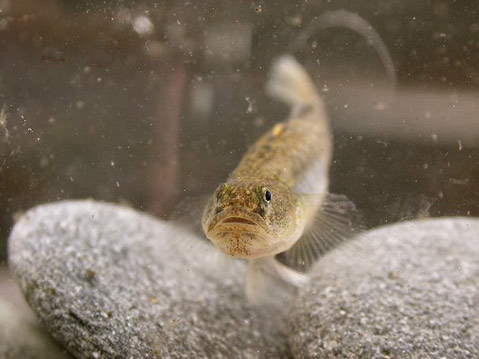Species Under Review
A Paintbrush, a Primrose, Grasses, Mallow, and the Goby Are Currently Protected by the Endangered Species Act

Five California plants and one California fish currently protected by the Endangered Species Act are under review. The San Clemente Island Indian paintbrush, San Clemente Island bush mallow, and San Clemente Island broom; Eureka Valley dunegrass and the Eureka Valley evening primrose; and the tidewater goby (which can be found in Santa Barbara) are all being looked at, according to a press release distributed by the U.S. Fish and Wildlife Service.
The Pacific Legal Foundation seeks to get the Eureka Valley dunegrass and primrose off the list of endangered and threatened species. The group also seeks to downgrade the other four species from endangered to threatened. Downgrading from one status to the other would indicate that many of the problems threatening the respective species are controlled, and that population recovery efforts look positive and have met certain goals.
The tidewater goby was first listed in 1994, when it was noted that the fish were gone from 50 percent of their previous habitat in wetlands and estuaries. These are fragile ecosystems frequently challenged by housing developments and pesticide runoff. That was a drought year. Five years later, in 1999, the tidewater gobies were found in much of the “lost” territory following a period of productive rainfall—part of the reason for calls since then for them to be de-listed.
Public outcry led to development of a recovery plan for the species instead. Now, after a five-year examination of its population levels, changing the tidewater goby’s status to threatened is again at play. Unfortunately, it still appears that the gobies are missing from portions of their former range, and only about half the areas they reside in are under any kind of protection.
The Fish and Wildlife Service did a five-year review of each of the species and came to similar conclusions as the Pacific Legal Foundation, but is currently soliciting public opinion until March 19, 2011. Personal observations, as well as governmental and scientific opinions, are welcomed in determining species viability and helping to make the final decision. Information can be submitted in the following ways:
• Federal eRulemaking Portal Look for the box that reads “Enter Keyword or ID” and enter the docket number for this rule, which is FWS-R8-ES-2011-0005.
• U.S. mail or hand-delivery: Public Comments Processing, Attn: FWS-R8-ES-2011-0005; Division of Policy and Directives Management; U.S. Fish and Wildlife Service; 4401 N. Fairfax Drive, Suite 222; Arlington, VA 22203.
Comments will be posted on the regulations.gov Web site.


